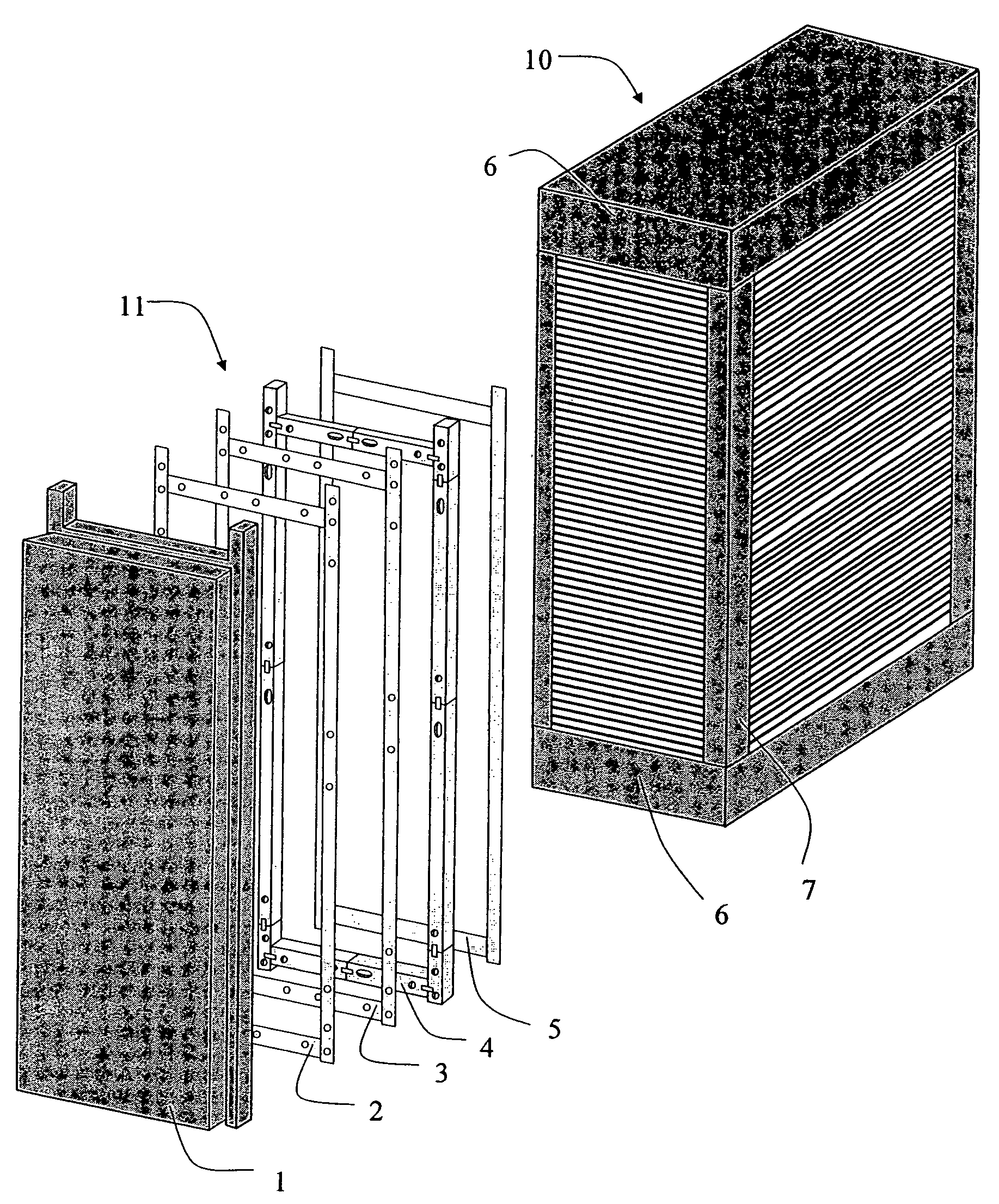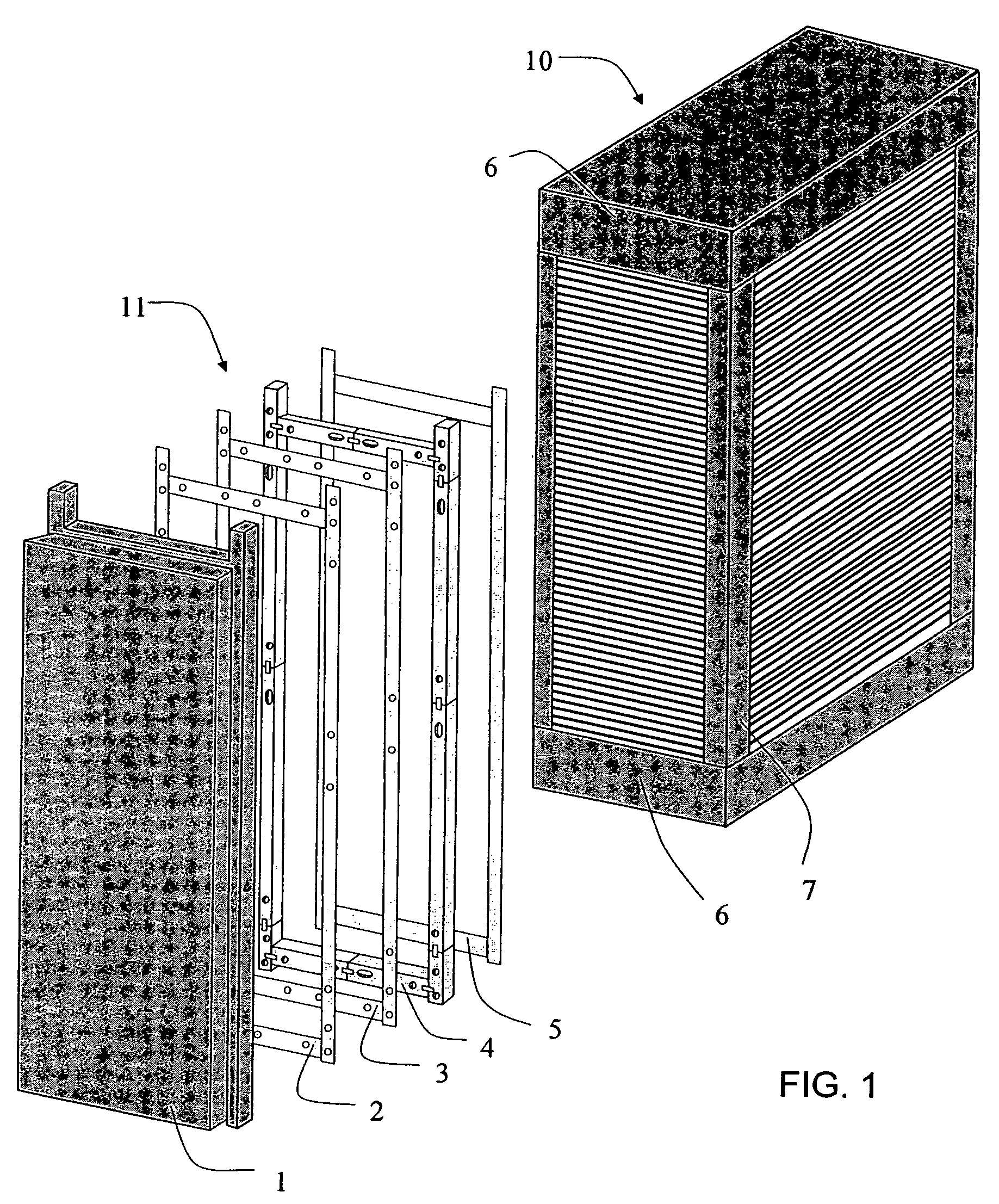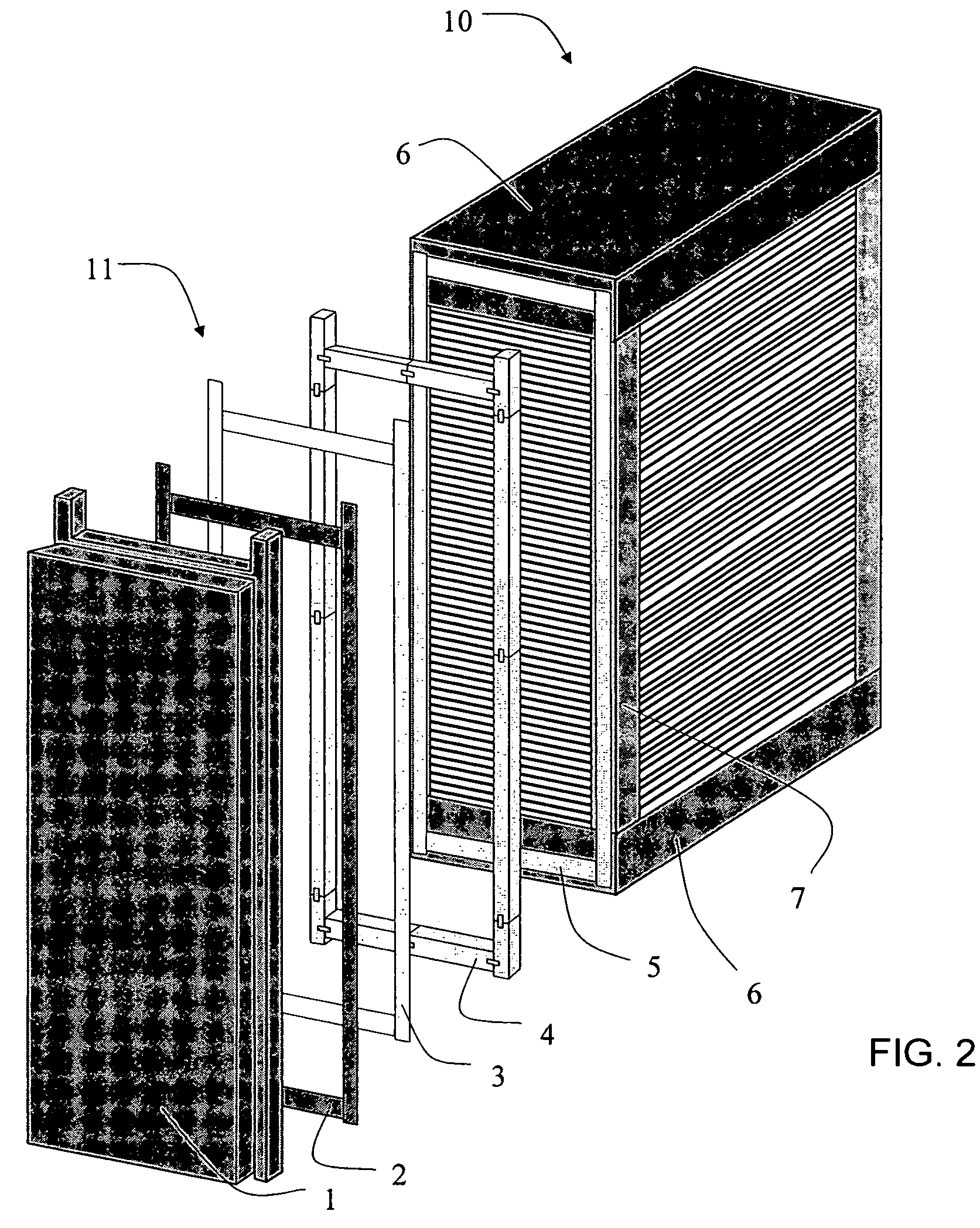Manifold gasket accommodating differential movement of fuel cell stack
a technology of differential movement and fuel cell stack, which is applied in the field of fuel cell systems, can solve the problems of fuel cell stack shrinkage over its life, deterioration of gaskets, and wear during stack operation, and achieve the effects of promoting slippage, preventing deterioration of gaskets, and promoting slippage in these slip planes
- Summary
- Abstract
- Description
- Claims
- Application Information
AI Technical Summary
Benefits of technology
Problems solved by technology
Method used
Image
Examples
Embodiment Construction
[0029]The present invention provides a gasket or seal that accommodates the changes in shape and dimension of a fuel cell stack that occur during stack life and the differential movements that result from such physical changes. These movements may be categorized as thermal movements, which occur during heating or cooling or result from operational variations, and internal cell compaction movements, which occur during the initial conditioning and longer-term creep of the components. The gasket described in detail below allows both types of movements and thus minimizes stresses imparted on the dielectric insulators.
[0030]In particular, the gasket limits stresses caused by the differences in coefficients of expansion between the manifold assembly and stack components. The materials described were evaluated and selected from tests that simulate relative movements between adjacent surfaces in contact at fuel cell operating conditions. A major consideration in the development of the gaske...
PUM
| Property | Measurement | Unit |
|---|---|---|
| dielectric | aaaaa | aaaaa |
| dielectric insulator | aaaaa | aaaaa |
| length | aaaaa | aaaaa |
Abstract
Description
Claims
Application Information
 Login to View More
Login to View More - R&D
- Intellectual Property
- Life Sciences
- Materials
- Tech Scout
- Unparalleled Data Quality
- Higher Quality Content
- 60% Fewer Hallucinations
Browse by: Latest US Patents, China's latest patents, Technical Efficacy Thesaurus, Application Domain, Technology Topic, Popular Technical Reports.
© 2025 PatSnap. All rights reserved.Legal|Privacy policy|Modern Slavery Act Transparency Statement|Sitemap|About US| Contact US: help@patsnap.com



